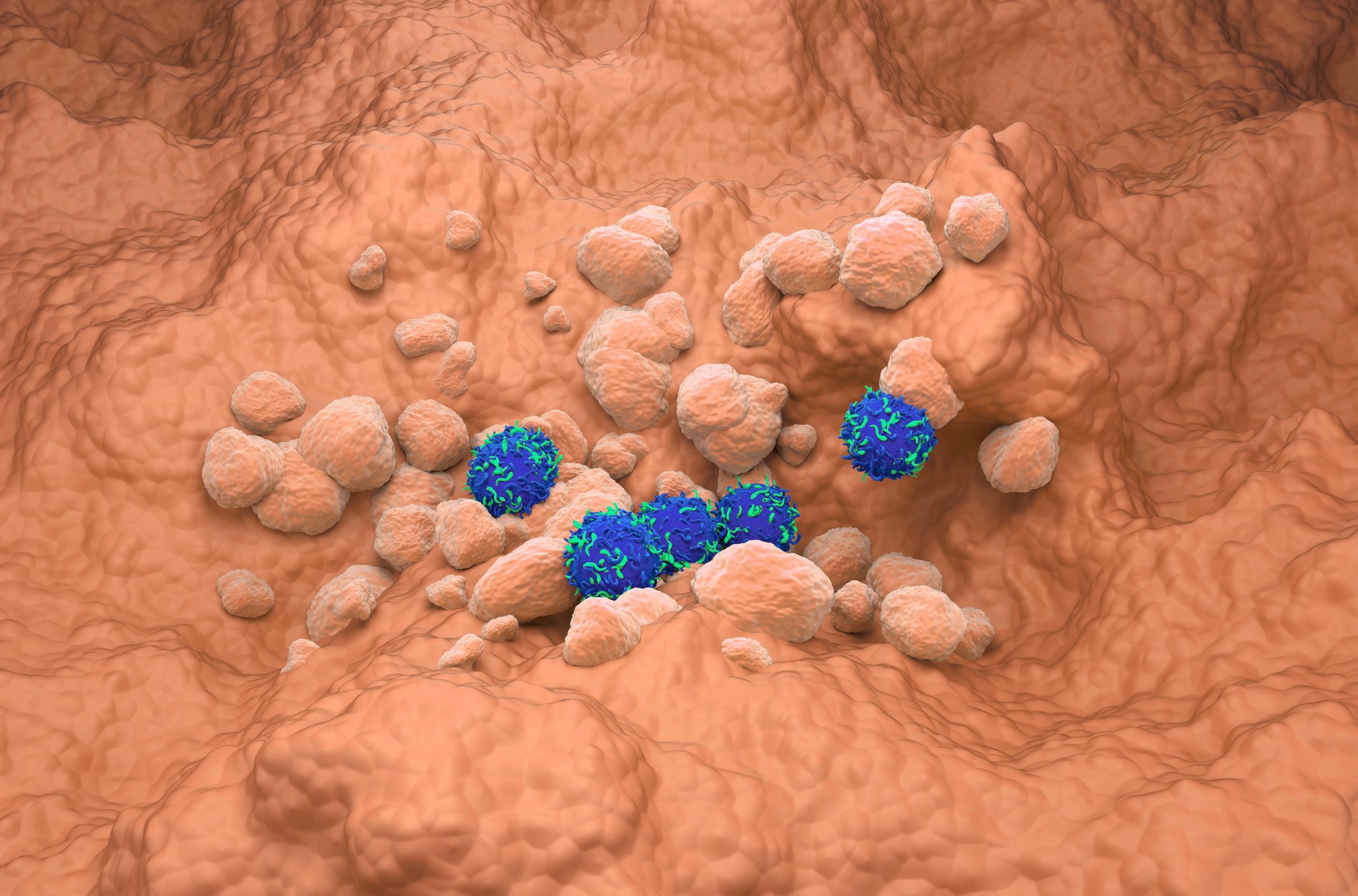AV valve regurgitation is relatively common, prognostically relevant, and overall undertreated. With regard to the mechanism of development, a distinction is made between primary insufficiencies, in which a structural defect of the valve is the decisive factor, and secondary insufficiencies, in which leakage occurs despite a structurally intact valve due to geometric changes in the ventricle and/or atrium.
Leakage of the atrioventricular (AV) valves, mitral and tricuspid, is a relatively common condition that is often not adequately treated despite its prognostic relevance. A major reason for this under-treatment is that there is often a high risk of surgery at diagnosis. In recent years, various catheter-based procedures have been developed that allow effective and safe treatment of AV valve disease even in advanced stages of disease. The following article reviews the currently available interventional therapeutic options for AV valve disease.
Therapy of mitral valve regurgitation
The recommended therapy for mitral valve regurgitation (MI) depends largely on the mechanism of origin, which is why a comprehensive characterization of the vitium should always be performed as part of the initial diagnosis. In primary MI, there is direct structural damage to the valve leaflets, with prolapse or flail being the most common. Secondary MI results from geometric changes in the left ventricle (LV) or atrium (LA), e.g., as a consequence of heart failure, recent posterior myocardial infarction, or atrial fibrillation, leading to restriction of the valve leaflets and/or dilatation of the valve annulus. High-grade MI, regardless of mechanism, is associated with high mortality and with 10-year survival reduced by half compared with a cohort of the same age [1]. This is essentially because the volume load on the LV associated with the disease leads to progressive and eventually terminal heart failure.
In high-grade primary MI, even at the first evidence of incipient left ventricular dysfunction before the onset of symptoms, surgical intervention (preferably valve reconstruction) is prognostically useful and therefore clearly recommended. Current guidelines make a Class I recommendation for surgical reconstruction in the presence of symptoms, LV dilation (left ventricular end-systolic diameter ≥40 mm), or a modest reduction in LV pump function (left ventricular ejection fraction ≤60%) [2]. Also, if the leak causes atrial fibrillation, or pulmonary hypertension (systolic pulmonary arterial pressure >50 mmHg), surgery should be considered (Class IIa recommendation). This level of recommendation also applies to significant atrial enlargement secondary to MI when the procedure is performed at a valve center and durable repair is judged likely [2]. Catheter-based therapies have been inferior to surgical therapy in primary MI in previous studies and are therefore currently only considered in symptomatic patients at very high risk of surgery (class IIb recommendation). A currently ongoing study is comparing the benefits of surgical and catheter-based therapy in patients with primary MI and moderate surgical risk. Since the effectiveness of catheter procedures has improved significantly in recent years due to technical advancements and increasing experience, a paradigm shift in this patient population is basically conceivable in the future.
In secondary MI, guideline-based heart failure therapy should be established first before evaluation of surgical or catheter-based options [2]. Both heart failure drug therapy and cardiac resynchronization therapy have the potential to significantly reduce the severity of MI. Only if relevant and symptomatic leakage remains thereafter should surgical/interventional procedures be evaluated by the cardiac team (Class I recommendation). If cardiac surgery is planned for other reasons and is safely feasible (e.g., bypass surgery), it is clearly recommended to treat secondary MI as well (Class I recommendation). In most cases, however, the risk of surgery for secondary MI is often high given the comorbidities, and the risk-benefit ratio of isolated surgery is poor. Such isolated surgery should therefore only be considered in symptomatic patients with very low surgical risk (class IIb recommendation). For the not insignificant proportion of patients who remain symptomatic and at high risk of surgery despite optimal heart failure therapy, catheter-based procedures represent an important treatment option. Sail-based reconstruction is the most advanced and commonly used catheter procedure: In this procedure, a catheter system is inserted into the right atrium via the inguinal vein and into the left atrium by puncturing the atrial septum (transseptal approach). Finally, the mitral valve leaflets are grasped with a special grasping system and stapled together by implanting one or more clips in the area of leakage. In the randomized COAPT trial published in 2018, therapy significantly reduced both all-cause mortality and hospitalizations for heart failure [3]. Treatment of just eight patients prevented one death during the three-year follow-up period. However, the study had a number of inclusion and exclusion criteria, some of which were very strict, and another study published at about the same time (MITRA-FR) with partially different criteria failed to show a prognostic benefit of the therapy. In the current guidelines, although a class IIa recommendation for leaflet-based reconstruction of the mitral valve was made for the first time as a result of the studies, this recommendation was linked to the presence of what are now often referred to as “COAPT criteria.” Among other requirements, the effective regurgitation opening area (EROA) of MI should be at least 0.3 cm², the LV should not be too dilated (LVESD <70 mm), and left heart failure should not be too advanced (LV-EF <20%). Other important “COAPT criteria” include the absence of severe pulmonary hypertension, right heart failure, or severe COPD. Even under real-world conditions, the outcome is significantly better in the presence of these criteria [4].
It is possible that, in addition to differences in patient selection, inadequate procedure quality contributed to the negative outcome of the MITRA-FR trial. Indeed, recent studies have demonstrated that sail-based mitral valve reconstruction can achieve substantial symptomatic benefit even when COAPT criteria are not met [5,6]. Technical developments of the devices and increasing experience of the surgeons have presumably contributed to a relevant improvement of the procedure quality in view of the new data, so that less suitable patients can also be treated better. Currently, the guidelines make a Class IIb recommendation for sail-based reconstruction or other appropriate catheter intervention procedures for patients who do not meet COAPT criteria.
Two systems for leaflet-based reconstruction of the mitral valve are currently approved in Europe (MitraClip from Abbott and PASCAL from Edwards Lifesciences). An interim analysis of the currently ongoing randomized CLASP-IID/IIF trial failed to show a clear advantage of either system in terms of safety and efficacy [7]. The same conclusion was reached in a recent propensity score-matched real-world analysis [8]. In both trials, the PASCAL device performed slightly better in terms of MI reduction, although clinical improvement tended to be slightly better after MitraClip. Studies currently underway will show whether these differences are reproducible and clinically relevant. The successful treatment of a high-grade MI with the MitraClip system is exemplified in Figure 1 .

Catheter-based annuloplasty, in which a band is attached to the valve annulus with special anchor screws and the annulus is eventually tightened by contracting the band, and catheter-based valve replacement are other promising procedures for the treatment of MI [9,10]. Annuloplasty is particularly suitable when the leading mechanism of leakage is annular dilatation. The Cardioband system (Edwards Lifesciences) has been approved in Europe since 2015.
Catheter-based mitral valve replacement is a treatment option for patients with complex valve anatomy and poor suitability for leaflet-based reconstruction. Most systems are still in clinical trials. However, since 2020, the Tendyne device (Abbott), the first system for catheter-based mitral valve implantation, has been approved in Europe. In this system, a self-expanding biovalve prosthesis is inserted transpically, deployed in the mitral valve annulus, and fixed in the apex by a special tether. In an initial analysis, procedural safety and acute procedural success were very high, with 97 of 100 implantations successful and no periprocedural deaths [9]. Nevertheless, mortality – especially in the first three months after surgery – was very high, suggesting suboptimal patient selection. Currently ongoing studies will provide important data regarding adequate patient selection. Initial experience with systems that allow transfemoral mitral valve replacement continues to be promising. It is possible that such a less invasive approach may reduce postprocedural mortality.
Therapy of tricuspid regurgitation
Tricuspid regurgitation (TI) is relatively common, especially in the elderly, but overall underdiagnosed despite its clinical and prognostic relevance. In a recent US study, one in 25 over-75-year-olds had detectable TI of at least moderate severity [11]. Analogous to MI, a distinction is made between primary and secondary TI, with a secondary genesis being significantly more common (90% of cases) [11]. The main causes are chronic right heart strain or dilatation as a result of left heart or pulmonary vascular disease and enlargement of the right atrium as a result of chronic atrial fibrillation. The 1-year mortality of secondary TI is up to 30% [11]. A major problem is that the disease is often symptomatic only in very advanced stages and therefore often diagnosed late. To address this issue and still make the effects of therapeutic interventions visible, the graduation scale of the TI was recently extended to include the grades “massive” (EROA 60-79 mm²) and “torrential” (EROA ≥80 mm²) [12].
Isolated surgery is recommended for TI only in very early stages of disease because the risk of such an intervention is very high: for example, hospital mortality was 10% in a recent study and was particularly high in secondary TI at 14% [13]. According to the current guidelines, surgery for primary TI should only be performed if severe RV dysfunction is not yet present (class I recommendation), and for secondary TI, severe LV dysfunction and pulmonary hypertension should also not be present (class IIa recommendation) [2]. If cardiac surgery is performed for other reasons, high-grade TI should always be co-supplied (class I recommendation), and co-supply should also be considered for moderate-grade primary TI and mild-grade secondary TI with marked annular dilatation (class IIa recommendation) [2]. However, in the randomized CTCR-MVS trial published in 2021, co-treatment of moderate- or low-grade TI during mitral valve surgery did not improve prognosis or clinical outcome [14].
By analogy with the mitral valve, secondary TI is often reversible if the cause is treated. Therefore, planning of an intervention/surgery should always be preceded by optimal treatment of the causative diseases. In particular, these include left ventricular failure, left ventricular valve disease, pulmonary hypertension, and atrial fibrillation. According to the current guidelines, interventional therapy procedures should be considered if high-grade, symptomatic TI persists (class IIb recommendation) [2]. Basically, the same catheter-based procedures are available for the treatment of TI as for the treatment of MI [15]. Initial studies have shown very promising results for sail-based reconstruction, catheter-based annuloplasty, and transfemoral valve replacement [15]. Most empirical data are also available for sail-based reconstruction in the tricuspid valve. Currently, the TriClip and PASCAL devices for sail-based reconstruction and the Cardioband system for catheter-based annuloplasty are approved in Europe.
In the TRILUMINATE study, 85 patients were treated with the TriClip system. Implantation was successful in all cases, and after 2 years of follow-up, a sustained reduction of insufficiency (85% less severe than before treatment) and improvement of symptoms (NYHA stage I/II in 81%) were achieved [16]. In addition, the rate of hospitalization for heart failure in the two years after the intervention was only about half that before. Through technical further development of the system, which is now in its fourth generation (TriClip G4), treatment effectiveness has been further increased in recent years. In particular, patients with large coaptation defects can now be treated much better: While the previous generations (TriClip NTR and XTR) were mostly ineffective in treating coaptation gaps larger than 7.2 mm and 8.4 mm, respectively, a recent study showed that the latest generation was successful in 93% of cases, even for defects larger than 10 mm, with significant symptomatic improvement. [17].
Two registry studies, TriCLASP and CLASP TR, also showed high procedural success for the PASCAL device (successful implantation in more than 90%), sustained reduction of insufficiency in nearly 90%, and associated clinical improvement [18,19].
Cardioband implantation was also successful in all cases in the TRI-REPAIR study published in 2019 and associated with a sustained reduction in leak (at most moderate residual insufficiency in ¾ of patients at two years) [15]. Figure 2 shows the successful treatment of high-grade TI with the Cardioband system.

Systems for catheter-based valve replacement are now also available for the treatment of TI. The EVOQUE system allows transfemoral implantation of a bioprosthesis and was successfully applied in 98% of the 56 included patients in a small study (TRISCEND). At 30 days, all patients with successful implantation had at most mild residual insufficiency and significant clinical functional improvement [20].
Of note, all of the above procedures (leaflet-based reconstruction, annuloplasty, and valve replacement) can achieve relevant reverse RV remodeling (10% reduction in basal end-diastolic right ventricular diameter) in addition to marked symptomatic improvement [21–23]. Data from randomized trials comparing intervention procedures with drug therapy do not yet exist. However, such studies have been initiated, and a propensity score-matched study has already provided preliminary evidence for a survival benefit after catheter-based tricuspid valve intervention compared with drug therapy (1-year mortality 23% vs 36%) [24].
Take-Home Messages
- AV valve regurgitation is relatively common, prognostically relevant, and overall undertreated.
- With regard to the mechanism of development, a distinction is made between primary insufficiencies, in which a structural defect of the valve is the decisive factor, and secondary insufficiencies, in which leakage occurs despite a structurally intact valve due to geometric changes in the ventricle and/or atrium.
- First-line therapy of primary AV valve regurgitation is surgical reconstruction. Catheter-based techniques are considered when the risk is too great for conventional surgery.
- For secondary insufficiencies, the first step should be to identify the underlying
disease (especially heart failure, atrial fibrillation, or pulmonary hypertension) can be optimally treated. If symptomatic leakage persists, depending on the risk of surgery and the presence of other cardiac diseases requiring treatment, open-
surgical and catheter-based treatment procedures are considered.
Literature:
- Dziadzko V, Clavel M-A, Dziadzko M, et al: Outcome and undertreatment of mitral regurgitation: a community cohort study. Lancet (London, England) 2018; 391: 960-969. doi:10.1016/S0140-6736(18)30473-2.
- Vahanian A, Beyersdorf F, Praz F, et al: 2021 ESC/EACTS Guidelines for the management of valvular heart disease. Eur Heart J 2021; 43: 561-632. doi:10.1093/EURHEARTJ/EHAB395.
- Mack MJ, Lindenfeld JA, Abraham WT, et al: 3-Year Outcomes of Transcatheter Mitral Valve Repair in Patients With Heart Failure. J Am Coll Cardiol 2021; 77: 1029-1040. doi: 10.1016/j.jacc.2020.12.047
- Adamo M, Fiorelli F, Melica B, et al: COAPT-Like Profile Predicts Long-Term Outcomes in Patients With Secondary Mitral Regurgitation Undergoing MitraClip Implantation. JACC Cardiovasc Interv 2021; 14: 15-25. doi: 10.1016/J.JCIN.2020.09.050
- Lindenfeld J, Abraham WT, Grayburn PA, et al: Association of Effective Regurgitation Orifice Area to Left Ventricular End-Diastolic Volume Ratio With Transcatheter Mitral Valve Repair Outcomes: A Secondary Analysis of the COAPT Trial. JAMA Cardiol 2021; 6: 427-436. doi: 10.1001/JAMACARDIO.2020.7200
- Tang G, Mahoney P, von Bardeleben S, et al: One-Year Outcomes in Patients With Secondary MR Outside the COAPT Criteria: From the MitraClipTM Global EXPAND Study. TVT Congress 2022. On the Web: https://d18mqtxkrsjgmh.cloudfront.net/public/2022-06/6cd57b6d-e9dc-4fc1-a6fc-d3c5a81be533.pdf
- D. Scott Lim M, Robert L. Smith M, Linda D. Gillam, MD M, et al: Randomized Comparison of Transcatheter Edge-to-Edge Repair for Degenerative Mitral Regurgitation in Prohibitive Surgical Risk Patients. JACC Cardiovasc Interv 2022. doi: 10.1016/J.JCIN.2022.09.005
- Victor Mauri M, Atsushi Sugiura, MD P, Max Spieker M, et al: Early Outcomes of 2 Mitral Valve Transcatheter Leaflet Approximation Devices: A Propensity Score-Matched Multicenter Comparison. JACC Cardiovasc Interv 2022. doi: 10.1016/J.JCIN.2022.10.008
- Muller DWM, Sorajja P, Duncan A, et al: 2-Year Outcomes of Transcatheter Mitral Valve Replacement in Patients With Severe Symptomatic Mitral Regurgitation. J Am Coll Cardiol 2021; 78: 1847-1859. doi: 10.1016/J.JACC.2021.08.060
- Messika-Zeitoun D, Nickenig G, Latib A, et al: Transcatheter mitral valve repair for functional mitral regurgitation using the Cardioband system: 1 year outcomes. Eur Heart J 2019; 40: 466-472. doi: 10.1093/EURHEARTJ/EHY424
- Topilsky Y, Maltais S, Medina Inojosa J, et al: Burden of tricuspid regurgitation in patients diagnosed in the community setting. JACC Cardiovasc Imaging 2019; 12: 433-442. doi: 10.1016/j.jcmg.2018.06.014
- Vahanian A, Beyersdorf F, Praz F, et al: 2021 ESC/EACTS Guidelines for the management of valvular heart diseaseDeveloped by the Task Force for the management of valvular heart disease of the European Society of Cardiology (ESC) and the European Association for Cardio-Thoracic Surgery (EACTS). Eur Heart J 2021. doi:10.1093/EURHEARTJ/EHAB395.
- Dreyfus J, Flagiello M, Bazire B, et al: Isolated tricuspid valve surgery: impact of aetiology and clinical presentation on outcomes. Eur Heart J 2020; 41: 4304-4317. doi:10.1093/EURHEARTJ/EHAA643.
- Gammie JS, Chu MWA, Falk V, et al: Concomitant tricuspid repair in patients with degenerative mitral regurgitation. N Engl J Med 2021. doi: 10.1056/NEJMOA2115961/SUPPL_FILE/NEJMOA2115961_DATA-SHARING.PDF
- 15 Praz F, Muraru D, Kreidel F, et al: Transcatheter treatment for tricuspid valve disease. EuroIntervention 2021; 17: 791-808. doi:10.4244/EIJ-D-21-00695.
- 16. von Bardeleben S, Lurz P, Sitges M, et al: Percutaneous edge-to-edge repair for TR: 2-Year outcomes from the TRILUMINATE trial. EuroPCR 2021. Im Internet: https://media.pcronline.com/diapos/EuroPCR2021/3890-20210518_0903_Clinical_Science_von_Bardeleben_Ralph_0000_(7752)/von_Bardeleben_Ralph_20211805_0648_VOD.pdf
- Lurz P, Lapp H, Schueler R, et al: Real-world Outcomes for Tricuspid Edge-to-Edge Repair: Initial 30-Day Results from the TriClipTM bRIGHT Study. EuroPCR 2022. Im Internet: https://media.pcronline.com/diapos/EuroPCR2022/2639-20220519_0945_Room_Maillot_Lurz_Philipp_1111111_(5992)/Lurz_Philipp_20220519_0830_Room_Maillot.pdf
- Hahn RT: Transcatheter tricuspid valve repair: CLASP TR study one-year results. EuroPCR 2022. Im Internet: https://media.pcronline.com/diapos/EuroPCR2022/2639-20220519_0915_Room_
Maillot_Hahn_Rebecca_1111111_(15410)/Hahn_Rebecca_
20220519_0830_Room_Maillot.pdf - Baldus S. 30-day outcomes for transcatheter tricuspid repair: TriCLASP post-market study. EuroPCR 2022
- Kodali S, Hahn RT, George I, et al: Transfemoral Tricuspid Valve Replacement in Patients With Tricuspid Regurgitation: TRISCEND Study 30-Day Results. JACC Cardiovasc Interv 2022; 15: 471-480. doi: 10.1016/J.JCIN.2022.01.016
- Lurz P, Stephan von Bardeleben R, Weber M, et al: Transcatheter edge-to-edge repair for treatment of tricuspid regurgitation. J Am Coll Cardiol 2021; 77: 229-239. doi: 10.1016/j.jacc.2020.11.038
- Webb JG, Chuang A (Ming yu), Meier D, et al: Transcatheter Tricuspid Valve Replacement With the EVOQUE System: 1-Year Outcomes of a Multicenter, First-in-Human Experience. JACC Cardiovasc Interv 2022; 15: 481-491. doi: 10.1016/J.JCIN.2022.01.280
- Davidson CJ, Lim DS, Smith RL, et al: Early Feasibility Study of Cardioband Tricuspid System for Functional Tricuspid Regurgitation: 30-Day Outcomes. JACC Cardiovasc Interv 2021; 14: 41-50.
doi: 10.1016/J.JCIN.2020.10.017 - Taramasso M, Benfari G, van der Bijl P, et al: Transcatheter Versus Medical Treatment of Patients With Symptomatic Severe Tricuspid Regurgitation. J Am Coll Cardiol 2019; 74: 2998-3008. doi: 10.1016/J.JACC.2019.09.028.
CARDIOVASC 2023; 22(1): 5–9












